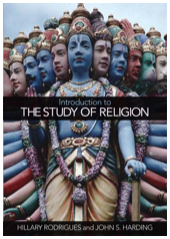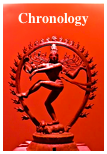damnation: the notion of being condemned to some terrible punishment, often for a religious failing, and often for eternity.
dao: term in East Asian religions for way or path with reference to a religious and philosophical worldview and guide to a meaningful and harmonious life; in Daoism, it can be understood as a generative source as well as ongoing natural pattern; also written as tao.
Daoism: philosophy, beliefs, and rites grounded on a profound relationship to the mysterious workings of nature; also written as Taoism.
darshana:Sanskrit term for viewpoint, perspective, or worldview; typically applied to religious/philosophical systems, such as Buddhism, Jainism, Vedanta, or Yoga.
deism: belief in a supreme being, typically a creator deity, who no longer intervenes in the functions of the universe; movement arose in the 17th century with an emphasis on reason as opposed to beliefs in supernatural events and relationships with divine entities.
didactic: instructive; intended to teach a moral lesson; can have a patronizing tone.
discipline: any branch of knowledge or body of teachings.
discursive: related to reasoning and rational argumentation, as opposed to intuition.
divination: seeking guidance from supernatural sources (e.g. gods or spirits), often with the aid of some material medium (e.g., person or instrument).
dogma: religious doctrine or other principles that authorities insist is incontrovertibly true.
dogmatism: assertion that only one’s own views, including religious doctrine, are true.
dualism: division into two opposite aspects, such as good and evil; also applied to worldviews that are not monistic and thus see reality as made up of more than one fundamental component (e.g., God and the creation).































